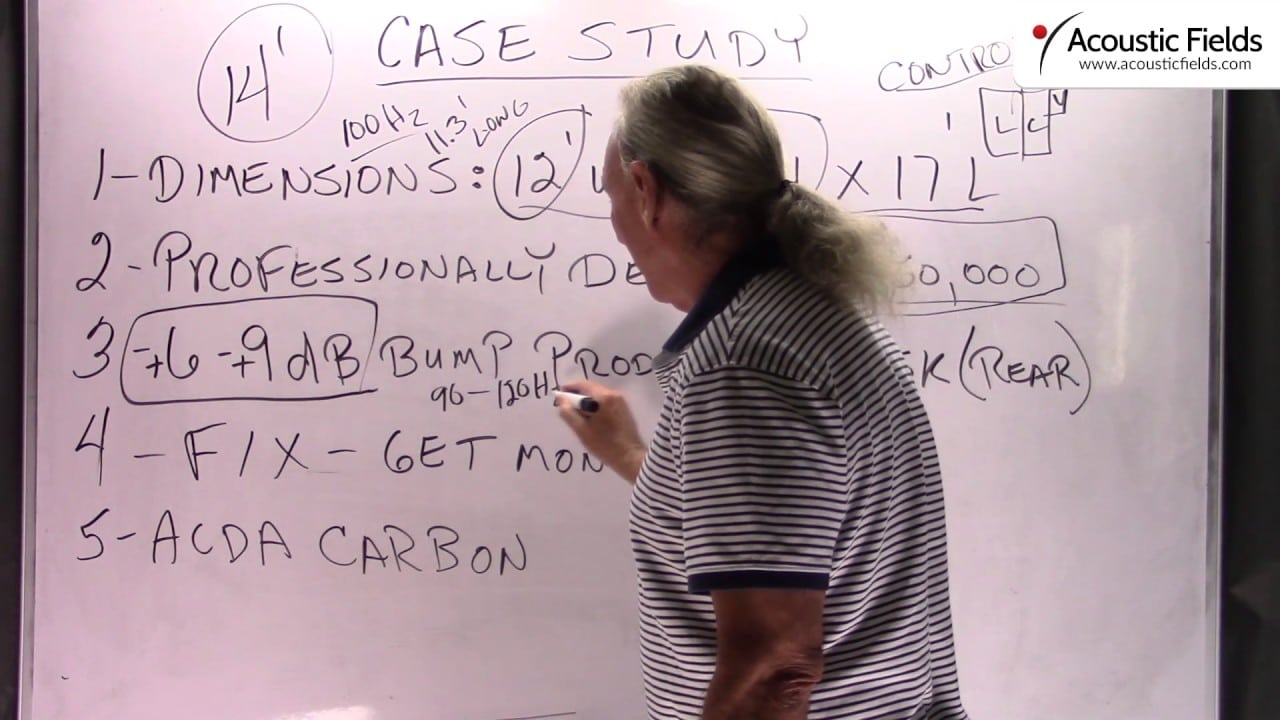I just want to go over an example that came across my desk a few days ago and this is about the third or fourth time I’ve seen this so I kind of want to bring this up. It lends some credibility to what we do and tells you a little bit about what’s out there and how expensive it is.
So this guy had a room and it was a control room, he had control and then he had live and then he had voice, he had a lot going on. Bottom line is he had spent over $250,000 on this room and he got a 12-foot wide room, 10 foot high and 17 foot long. Well we all know for my videos that 14 foot is the magic number that I always tell people, any dimension less than 14 foot in acoustics is always problematical because we know at a hundred cycles, that’s 11.3 foot long so we want to make sure that a hundred cycle wave will fit and we want to go a little bit extra just to make sure. So why is that a break point? Because that’s treatment, costs so much to treat, the low frequencies cost space and money to treat so if you can have a bigger volume in size you have less space to give up and less to spend on treatment so it’s kind of a break point.
So we had two dimensions here less than 14 and for the likes of me I could never understand at this price point why the client would have a +6 to a +9 dB bump from 90 Hz. to 120 Hz. yikes, critical area at the producer’s desk which is in the back of the control room. So the client called me and he says how do we fix this and I said well at $250,000 you shouldn’t have that problem to begin with, I just strongly suggest you call a designer and get your money back or have him come out and fix it. Well apparently that’s not an option so what are we going to do? Well we know from our database to +6 to +9 DB bump in this range and by the way our database showed 95 Hz. to 130 Hz. as problematic in these dimensions so like I said in the intro that gives us a lot of credibility for our database. So since getting the client’s money back was not an option we’re inspecting our carbon, now his room is tight as you could imagine what these dimensions and he’s even got a producer’s desk here in the back so we’re going to have to fashion some kind of… maybe legs for the desk to sit on that are going to be carbon, maybe we’re going to have some smaller freestanding carbon units around. It’s all about square footage matching the treatment to the problem and that takes space and square footage so we’ll get it figured out for him and it’ll be a lot less than $250,000 hopefully.
—
This is an unedited transcript from our video series from Acoustic Fields. There will be some errors in grammar and sentence structure that occur during this translation process.
For complete understanding and comprehension, please view the video which is included in this text. For any additional information regarding this topic or others relating to room acoustics, please contact us directly at:
P: 520 – 392 – 9486







